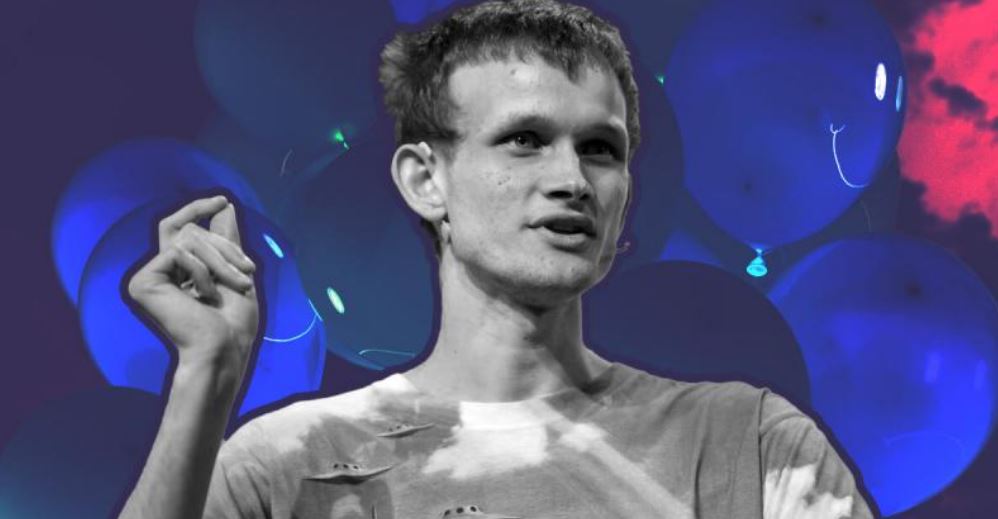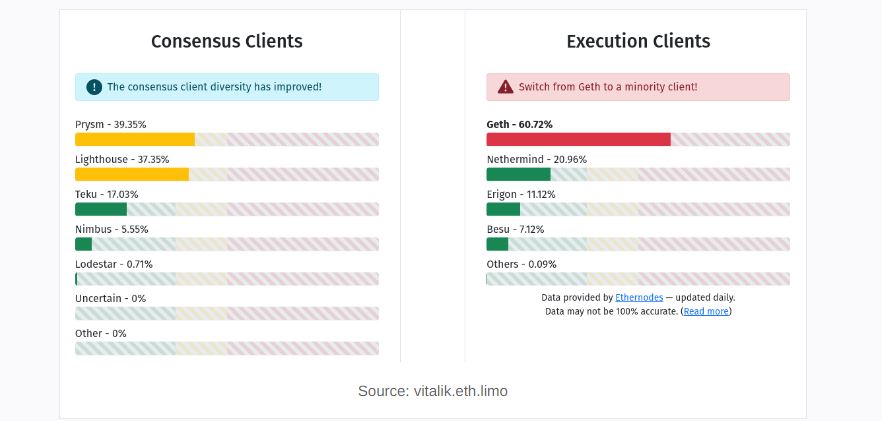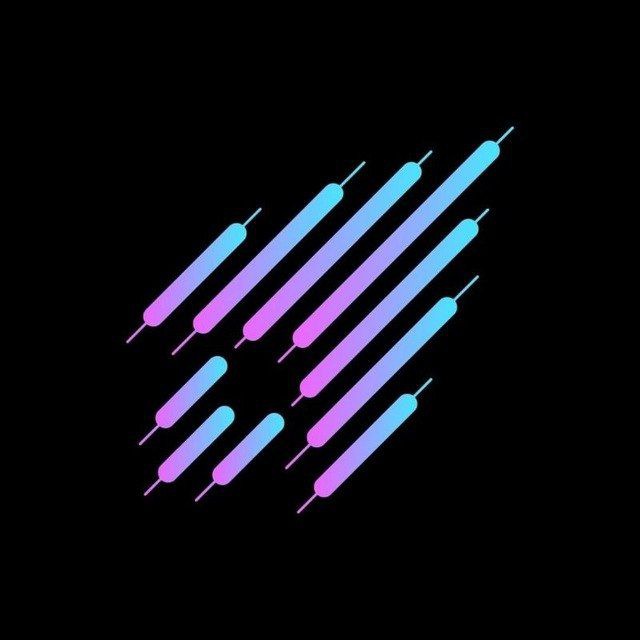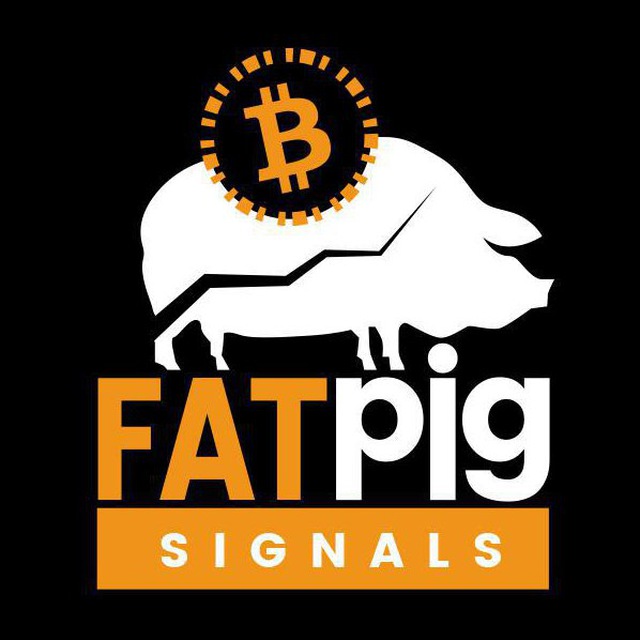Vitalik Buterin identifies a major obstacle for Ethereum’s future and suggests a solution

Maintaining the multi-client philosophy while leveraging ZK-EVM capabilities for improved Ethereum security and decentralization.
The multi-client problem with Zk-EVMs
Vitalik is of the opinion that ZK-EVMs will develop to the point where they will eventually be a necessary component of the layer-1 verification and security process for Ethereum. Zero Information (ZK) innovation permits engineers to demonstrate the genuineness of an exchange or message without uncovering any extra data. As a result, it makes it possible for one party to persuade another that a message is accurate without disclosing any information other than the message’s validity.
According to the Ethereum Co-Founder, however, the privacy-enforcing nature of ZK technology could disrupt the EVM landscape as a whole because Ethereum clients implement protocol rules in different subtle ways.
Layer 2 conventions in ZK rollups have effectively utilized ZK confirmations and aided scale Ethereum by packaging numerous exchanges into a solitary verification. However, “ZK-EVMs de-facto become a third type of Ethereum client, just as important to the network’s security as execution clients and consensus clients are today” as ZK-EVMs evolve to verify execution on the Mainnet.
Vitalik asks the following when he considers ZK-EVMs to be a third type of Ethereum client:
“How would we actually make a “multi-client” ecosystem for ZK-proving correctness of Ethereum blocks?”
Vitalik wants to keep the advantages of the “multi-client philosophy” while also making use of the capabilities of ZK-EVMs to enhance the Ethereum network’s scalability, security, and decentralization as the ecosystem grows.
Vitalik says that when using ZK technology with multiple clients, the main technical issues are latency and data inefficiency. Additionally, due to particular interpretations of the protocol’s rules or ZK-EVM implementations, distinct Ethereum clients handle zero-knowledge proofs in different ways.
Get to know Godleak
Godleak crypto signal is a service which comprise of a professional team. They tried to provide you signals of best crypto channels in the world.
It means that you don’t need to buy individual crypto signal vip channels that have expensive prices. We bought all for you and provide you the signals with bot on telegram without even a second of delay.
Godleak crypto leak service have multiple advantages in comparision with other services:
- Providing signal of +160 best crypto vip channels in the world
- Using high tech bot to forward signals
- Without even a second of delay
- Joining in +160 separated channels on telegram
- 1 month, 3 months , 6 months and yearly plans
- Also we have trial to test our services before you pay for anything

For joining Godleak and get more information about us only need to follow godleak bot on telegram and can have access to our free vip channels. click on link bellow and press start button to see all features
https://t.me/Godleakbot
Also you can check the list of available vip signal channels in the bot. by pressing Channels button.
ZK-EVM multi-client solutions
Vitalik is of the opinion that it is both feasible and advantageous for Ethereum’s security and decentralization to establish an open multi-client ZK-EVM ecosystem in spite of these difficulties.
The various clients utilized in the Ethereum ecosystem’s consensus and execution layers are depicted graphically below.

Vitalik Buterin
Vitalik contended that having various clients expands the security and decentralization of the organization by lessening the gamble of a solitary devastating bug in one execution, which could prompt a breakdown of the whole organization. Additionally, a multi-client philosophy promotes political decentralization by preventing the concentration of power within a single development team or organization.
As can be seen below, Vitalik offered three potential solutions to the problem.
- Single ZK-EVM: Switch away from the multi-client approach and select a single ZK-EVM to verify blocks.
- Multiple closed ZK-EVM: have a consensus-layer protocol rule that a block needs proofs from more than half of the ZK-EVMs in that set to be considered valid, and agree on and enshrine in consensus a specific set of multiple ZK-EVMs.
- Open multi ZK-EVM: Each client waits for a proof that is compatible with its own implementation before accepting a block as valid because different clients have different ZK-EVM implementations.
Vitalik is in favor of an open, multi-client ZK-EVM ecosystem in the context of ZK-EVMs. Before accepting a block as valid, each client waits for proof that is compatible with its own implementation of ZK-EVM.
“To me, (3) seems ideal, at least until and unless our technology improves to the point where we can formally prove that all of the ZK-EVM implementations are equivalent to each other…”
Vitalik, on the other hand, argued that the solution will be to select the most effective option once technology progresses to the point where ZK-EVM implementations are somewhat standardized. He accepts the “challenges [for choice 3] appear to be more modest than the difficulties of the other two choices, essentially for the present.”
Vitalik also made a nod to the recent rapid advancements in artificial intelligence, stating that these advancements could “supercharge” the creation of proving ZK-EVM implementations.
“In the longer-term future, of course anything could happen. Perhaps AI will super-charge formal verification to the point where it can easily prove ZK-EVM implementations equivalent and identify all the bugs that cause differences between them.”








